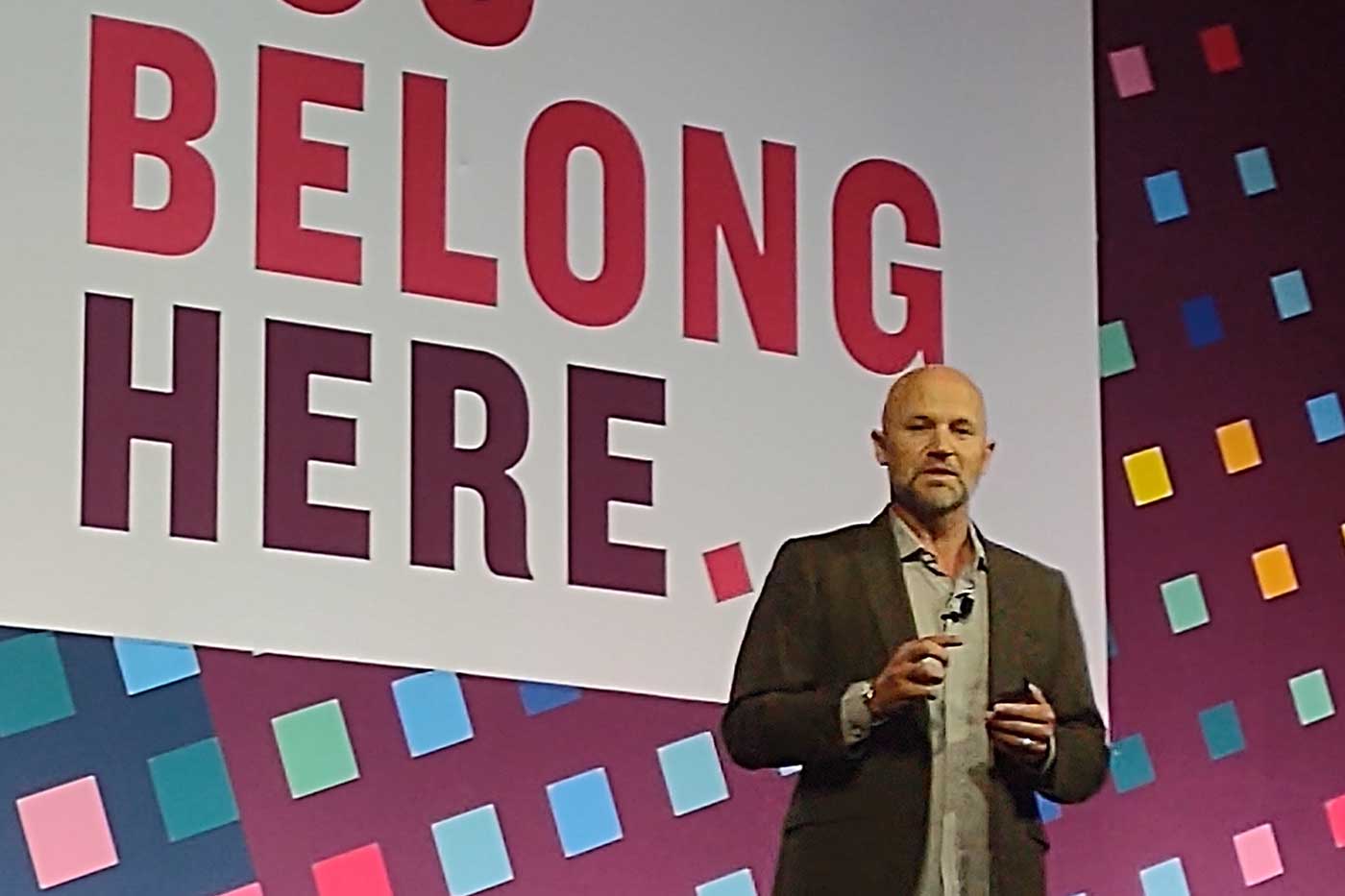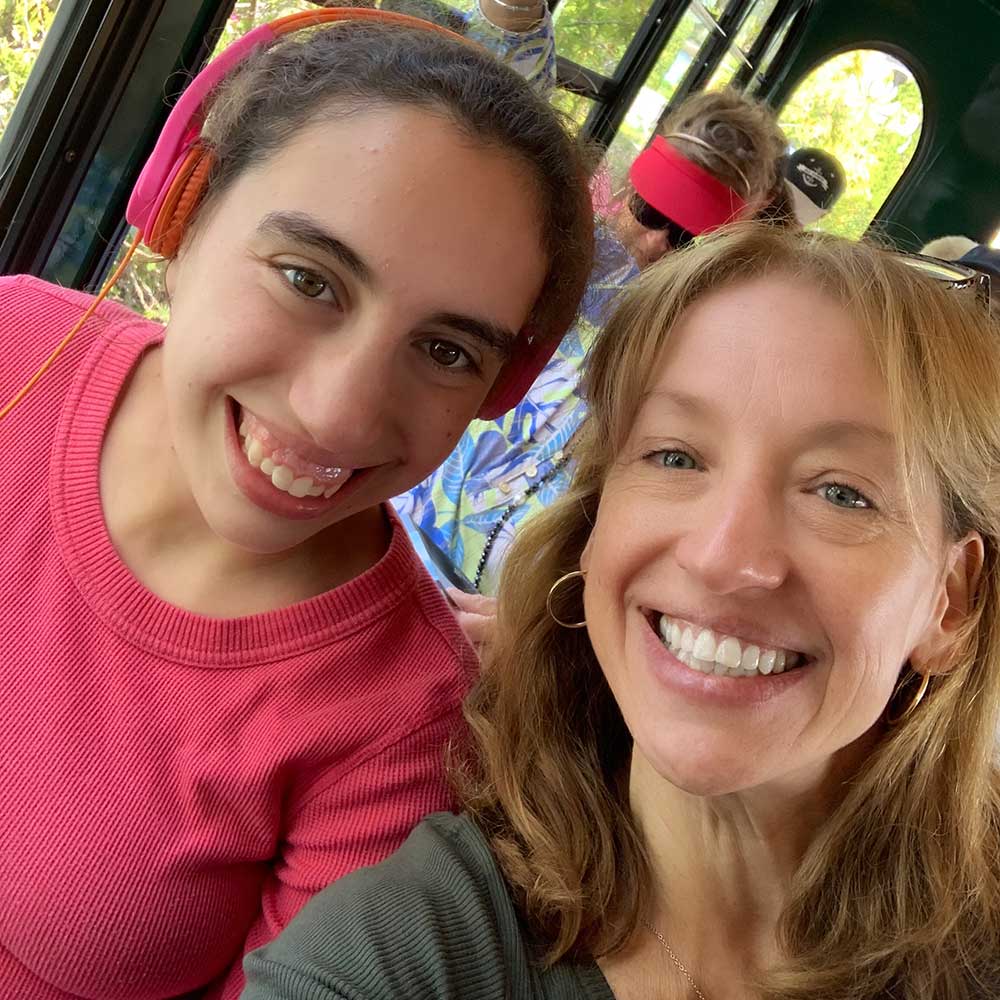Goodwin showcases biosensor-based, aggression-predicting autism research in APA keynote
Author: Milton Posner
Date: 08.07.23
On Saturday, Matthew Goodwin found himself in Washington, DC, one of a handful of keynote speakers at the American Psychological Association’s annual convention. It was a prominent talk at a prominent event put on by a prominent scientific organization.
 Photo credit: American Psychological Association
Photo credit: American Psychological Association
The topic Goodwin was presenting on, though, has historically been anything but prominent.
Goodwin, who holds a joint appointment between the Khoury College of Computer Sciences and the Bouvé College of Health Sciences, has spent his professional life researching and developing technology for people with autism. In particular, he’s focused on the 27 percent of that population classified as “profoundly autistic,” who are often prone to aggressive or self-injurious behavior such as hitting, kicking, biting, skin peeling, or banging their heads. With little to no ability to speak, they can’t name the source of their agitation and distress. And with no way to predict meltdowns, their families struggle to find schools and activities where they can safely participate.
But the spotlight hasn’t always found their struggle, says Alison Singer, co-founder and president of the Autism Science Foundation, which supports research into risk factors and interventions. In recent years, the ASF has focused on profound autism, which Singer says is seldom represented in media, in policymaking, and in research studies that often establish a 70-IQ minimum for participants.
But in his Saturday keynote, Goodwin showcased research that bucks that trend. By combining biosensors and machine learning to predict aggressive behavior, he’s aiming to give the families of profoundly autistic people something they’ve never had: the ability to predict, preempt, and mitigate meltdowns.
“I’m grateful for the opportunity to disseminate the work we’re doing,” Goodwin said of the APA address. “To talk about these issues so that there’s more compassion, more partnership to help people achieve their potential rather than us being afraid of them and sequestering them away — that’s what will help us provide better services. It’s an example of how technology can catalyze public health for all.”
That belief in technology was the reason that Goodwin, an experimental psychologist and behavioral scientist by training, found his way to computing in the first place. When he began researching autism in the 1990s, he knew that the scientific literature didn’t offer families much counsel on day-to-day issues outside of school, and caregivers specifically lacked support in areas such as sleep, diet, exercise, stress management, and nonverbal communication. So he resolved to support the profoundly autistic population — one often understudied in academia and underserved everywhere else.
“I wanted to record behavior and biology in the primarily nonverbal population,” Goodwin recalls. “There are more people who require support than there are people trained to provide it. Connecting people with technology is a way to offset that economy of scale problem.”
About 15 years ago, that technology started making significant strides to help the mission. Commercially available biosensors could measure heart rate, sweating, skin surface temperature, and motion — all potential precursors of aggression that are difficult or impossible to monitor with the human eye. And critically, they could do all of this in environments that participants were already familiar and comfortable with. So Goodwin and his team began measuring study participants’ physiological changes before, during, and after naturally occurring aggression.
“The exploratory and pioneering work resides in our machine learning models, and in us having enough data to train and test on, that we can pinpoint the physiological changes and predict the behavior before it happens,” Goodwin explains.
After years of study in psychiatric inpatient settings, Goodwin and his team have demonstrated that aggression can be predicted three minutes in advance with 80 to 90 percent accuracy. Now the team is replicating their methods in clinical outpatient settings before moving to the home, school, and work settings.
“Parents often have no warning before these incidents take place,” Singer notes, remembering one particularly dangerous outburst that her then-five-year-old daughter Jodie had in a moving car. “If there were a warning that aggressive or self-injurious outbursts were coming, that’s the Holy Grail. We don’t understand the biological cause, but if we can understand the precursors, we can stop it from happening and prevent injury. We could remove them from the agitating situation so it wouldn’t escalate.”
 Alison Singer (right) and her daughter Jodie.
Alison Singer (right) and her daughter Jodie.
Once that’s possible, Singer adds, other doors open.
“It’s impossible to go out and participate in community activities when you’re worried that something will agitate your child, so many of our families will stay at home and become socially isolated,” she says. “But with a biosensor and predictive analytics … I think many families would be more confident participating in activities and sending their children to school. Teachers would feel more confident having those children in their classroom.”
And once they’re there?
“The data from the biosensor and machine learning allows an adult to intervene compassionately,” Singer adds. “The great thing about the biosensor is that we all wear them. So when our kids with profound autism wear them, they’re not standing out. They’re not marked as a child who is likely to be aggressive … it almost makes them more a part of the community.”
And fitting enough for technology that fills a need long overlooked by academia, the development process took a uniquely multidisciplinary effort. Khoury College, Bouvé College, and the College of Engineering. Undergraduates, master’s students, doctoral students, postdocs, research scientists, and faculty. Experts in programming languages, data visualization, signal processing, machine learning, human–computer interaction, psychology, neurology, and developmental science. Project partners including autism advocates, clinicians, teachers, caregivers, families, device manufacturers, and the Marcus Autism Center. And Goodwin’s joint appointment, which draws computing and health science students into his classes and into the Computational Behavioral Science Lab that he directs.
“Northeastern and Khoury College attract students who aren’t developing technology just for the sake of developing it. They’re attracted to applying computing to do good for society,” Goodwin says. “The kinds of tools and knowledge that we’re generating may well change public health practice, so we’ll need a workforce that’s as comfortable in clinical health sciences as they are in computer and engineering sciences.”
And as he does his part to build that workforce, Goodwin will continue to showcase the research in front of new audiences, as he did on Saturday.
“I am so appreciative that the APA is shining its bright spotlight on our children because they have been left in the dark for so many years,” Singer says. “My daughter and all of the individuals with profound autism deserve to be in the community. They are loving and lovely people. They just need some support to participate more broadly. And we need more research and compassion so that they can reach their potential and be full participants in our communities.”
Subscribe to Khoury News
The Khoury Network: Be in the know
Subscribe now to our monthly newsletter for the latest stories and achievements of our students and faculty